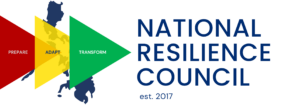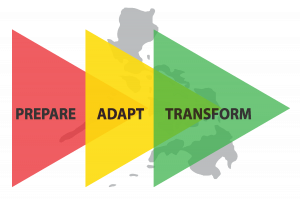By Amb. Roberto R. Romulo
It is a well-known fact that the Philippines is the third most vulnerable to disaster after Vanuatu and Tonga.
I was delighted to learn that that there is a research project that would like to explore how humanitarian assistance and disaster relief (HADR) missions can be “re-contextualized” as missions aimed at reducing risk in order to support development continuity and social transformation, rather than a one-off humanitarian action.
The proposed partners, Manila Observatory (MO), Ateneo, Sasakawa Peace Foundation and National Disaster Risk Reduction Management Council (NDRRMC) will begin by conducting a comparative analysis of international civilian-military coordination from the perspective of military theory, doctrine, policies and programs in the five founding members of ASEAN and Japan. This process aims to identify initial pathways for collaboration to enhance disaster resilience and development when HADR missions need to be deployed in these countries.
Mrs. Toni Yulo-Loyzaga of MO has shared with me the draft paper of this project entitled “Enhancing Civilian-Military Coordination for Disaster Resilience in ASEAN and Japan”. Allow me to quote extensively:
“The Philippines’ growing interconnection with the global economy, its emerging infrastructure sector, steady population growth, armed conflicts and insurgencies, and, poverty and inequality can increase its exposure and vulnerability to hazards and disaster risk. In the National Security Policy documents of 2011-2016 and 2016-2022 and in the draft AFP Development Support and Security Plan 2017-2022, climate and disaster risk have been identified as impacting national stability and sustainable development. In these policy contexts, both climate and disaster risk are considered as barriers to attaining national security. Moreover, disruption and displacement due to disasters can also impact regional and global relations.
While disasters have historically been able to decrease annual GDP by between 1 and 3 per cent, it is the the increasing human impacts and economic damage from extreme weather and recent geological hazards, the immediate lessons learned from Supertyphoon Haiyan, and, the warnings of possibly PhP2.4 Trillion in economic damage from the 7.2 magnitude earthquake that require us to view humanitarian assistance and disaster relief (HADR) in a more strategic context.
This would mean aligning mission outcomes along the security, stability and development priorities of each country, rather than just designing the deployment of an urgent mission to respond to emergency needs arising from a catastrophic event – and leaving after the emergency phase is over.
Disasters may be seen as opportunities to strengthen alliances through the sharing and delivery of assets and services with both emergency relief and long-term development value. Designing HADR missions must therefore be considered integral to all phases for disaster risk reduction from preparedness and pre-disaster recovery planning.
To illustrate, the Japanese Self Defense Forces are highly trained, equipped and skilled in road, port and bridge-building and the restoration of communications infrastructure. Pre-disaster agreements with Japan could be initiated for them to support our own AFP’s J-7 in restoring mobility and communications not just during the emergency relief phase, but for longer term use in the reconstruction and socio-economic recovery of the disaster-affected areas.”
Assessing our Strengths and Weaknesses
The paper also stressed that the Philippines would have to pro-actively and realistically confront its resources and knowledge gaps and identify key regional allies who are willing and able to provide strategic support to the government’s national security and development agenda.
One recent model of such collaboration could be the case of Yolanda and the South Korean armed forces. After surveying the needs of the population, Korea made a policy decision to stay, on a rotational basis, for a year in Leyte in order to support recovery and reconstruction efforts in the aftermath of Yolanda. The Philippines and South Korea share more than 60 years of partnership that is deeply rooted in the sacrifices of Filipino troops who fought in the Korean War in the 1950s.
At the end of the day, we must admit that we are not fully prepared to respond, for example, in an earthquake. Dr. Solidum of PHILVOLCS has been quoted that a 7.2 intensity earthquake in Metro Manila would cause 30,000 deaths and approximately 100,000 injured. Moreover, there would be no electricity, water and telecommunications. As just stated, we have an urgent need for HADR.
Collaboration, as exemplified by the Koreans, clearly indicates that we must coordinate with neighboring countries such as ASEAN neighbors, Japan and Korea. In the recent Yolanda experience, the United States (including the 7th fleet), Chinese Taipei, Australia and EU nations were more than forthcoming in supporting our people. I understand even the Chinese Navy provided a hospital ship.
Even as I commend the research project described above, the reality is there is no coordinated effort to secure in advance agreements/protocols from countries and multilateral organizations for HADR. For example, I understand that the Department of Foreign Affairs is supposed to lead the Philippine International Humanitarian cluster in the response group of NDRRMC headed by the DSWD. To date, the DFA has not been very active and the PIHA guidelines have not yet been finalized. Fortunately, I was able to speak with the new Acting Secretary Ricky Manalo and he has agreed to designate Undersecretary Ariel Abadilla to participate in our forthcoming conference “Building a Disaster Resilient Philippines”. Hopefully, Abadilla will also take the lead in orchestrating a meeting with the AFP/PNP/DND with guidance from NDRRMC to begin planning in coordination with nations and multilateral organizations.
Our Conference just referenced above will be on April 25-26. As a preview of guest speakers from whom we can learn from their past experiences: Dr. Wei-Sen Li, the Jiji earthquake in Taiwan; Dr. Satoru Nishikawa, the Tohoku earthquake and tsunami in Japan; Mr. Shingo Kochi, the pre-disaster recovery plan for Hyogo Prefecture; and Mr. Chris Balsley, how to cope with post-traumatic disorders from natural disasters.
Our objective is to instill in all that disaster preparedness goes beyond disaster response. In conclusion, let us make haste and get our act together!
SOURCE:
Romulo, R. (2017, April 13). Disaster resilience: Getting our act together, Filipino Worldview. Retrieved from https://www.pressreader.com/philippines/the-philippine-star/20170413/282063391832038
![]()


